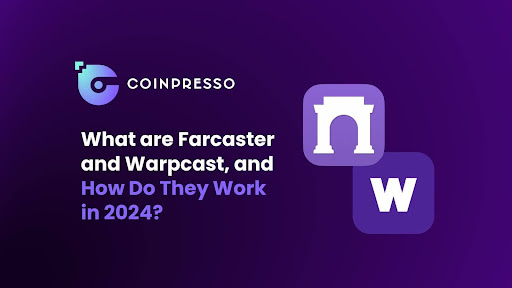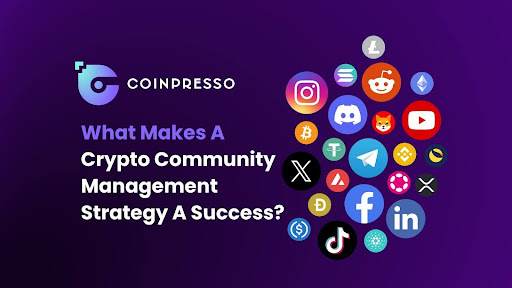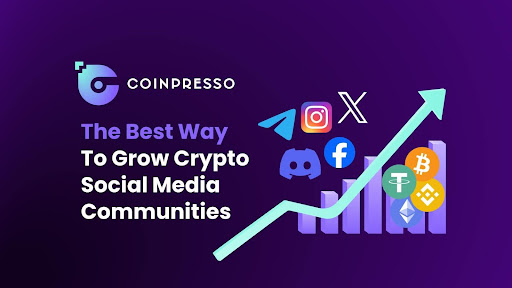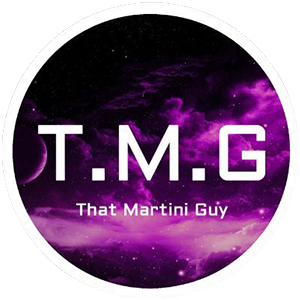
The newest players in the decentralized social media scene are Farcaster and Warpcast. The number of users on the platforms has surged this year, and as a result, many projects are now trying to leverage them to grow their user base and community.
Understanding these platforms is essential for anyone planning to launch crypto marketing campaigns in 2024, as they offer the potential to reshape communication and social media community building.
Farcaster's focus on decentralization and censorship resistance, coupled with Warpcast's intuitive user interface, presents an alternative to traditional social media models. As we move into 2024, exploring these platforms' features, functionalities, and future potential is crucial for individuals, businesses, and anyone seeking to leverage the power of blockchain technology for social media growth.
Understanding Farcaster Crypto Marketing and Decentralized Social Media
Farcaster is a decentralized social protocol built on Optimism, a Layer 2 scaling solution for Ethereum. This means it leverages blockchain technology to shift power away from central authorities toward individual users.
Warpcast’s use of decentralized technology allows it to return control to the user base. Resulting in a business model that completely goes in the face of popular sites like Instagram and TikTok, where tech companies harvest user data.
The decentralization of the platform generates a level of censorship resistance that is not available on mainstream platforms. For example, there’s very little danger of a single person or state enforcing restrictions on Warpcast users.
Farcaster's model flips this dynamic, promoting user sovereignty and a more open playing field for developers to experiment and innovate on social media. Furthermore, it opens the door to a new form of crypto social media marketing.
Warpcaster: The Most Popular DApp on Farcaster
Warpcast is the most popular application currently built upon the Farcaster crypto protocol. It offers a user-friendly interface that resembles familiar social media experiences. With features like posts, likes, recasts (similar to retweets), and a focus on visual appeal, Warpcast eases the transition for users accustomed to centralized platforms. This accessibility contributes significantly to its popularity and has made it a popular target for Web3 community management agencies.
Warpcast's success highlights the potential of Farcaster's underlying infrastructure. It provides the foundation for decentralization and censorship resistance, while Warpcast delivers an interface designed for ease of use and engagement. This combination offers a glimpse into the potential of decentralized social media to provide familiar experiences while prioritizing user empowerment.
Exploring Warpcast's Functionality
Core Features
At its heart, Warpcast provides the essential tools for social interaction that is expected from a social media platform user interface. Users can create posts, build profiles, follow others, and engage through likes and recasts. This familiar format makes it a comfortable starting point for those new to decentralized social media.
Powered by Farcaster Frames
Warpcast's true innovation lies in its integration of Farcaster Frames. This feature allows users to embed mini-applications directly within their posts. These Frames open exciting possibilities like minting NFTs, subscribing to newsletters, participating in polls, and even playing simple games. This functionality sets Warpcast apart, creating the potential for Web3-based social interaction and NFT marketplace development.
Use Cases
Warpcast's functionalities have applications for crypto marketing, community building, and even DeFi. Projects can leverage Warpcast for brand awareness campaigns, contests, and NFT airdrop marketing.
Leveraging Warpcast for Crypto and NFT Marketing
Farcaster and Warpcast provide fertile ground for crypto projects to grow their communities, enhance brand awareness, and drive engagement. Here's how marketers can harness these platforms for success:
- Crypto Community Management: Decentralized platforms offer a direct line of communication between projects and their audiences. Projects can share updates, create discussions, address feedback, and build strong relationships with supporters through active participation on Farcaster and Warpcast.
- Brand Promotion: Visually appealing posts, combined with Farcaster Frames, allow for creative campaigns showcasing a project's unique features, upcoming launches, or partnerships. Warpcast's intuitive interface enables users to share and recast this content easily, organically amplifying their reach.
- Targeted Airdrops and Contests: Farcaster's data on user wallets and on-chain activity can be used (respecting privacy) for targeted airdrops, rewarding specific actions, or incentivizing engagement. Warpcast Frames can turn giveaways and contests into interactive experiences.
- NFT Promotion and Integration: Projects can utilize Farcaster and Warpcast to promote NFT projects, facilitate NFT minting directly within posts, or host exclusive communities for NFT holders.
Successful crypto marketing on decentralized platforms requires a genuine approach. Focus on providing value, building organic community engagement, and prioritizing transparency over hype. The complexity of marketing a project on Warpcast means that most top crypto projects turn to leading web3 content marketing agencies like Coinpresso for support.
Final Thoughts on Farcaster and Warpcast
Farcaster and Warpcast have shown that decentralized social media is growing into a genuine competitor to the legacy model dominated by the likes of X (formerly Twitter) and Facebook. While still young, their features, like Farcaster Frames, hint at the vast potential for innovative interactions and community building. If the 2024 crypto bull run continues, interest in these platforms could continue to swell, making them potential gold mines for crypto projects looking to grow their communities beyond the standard Web2 social media sites.

































